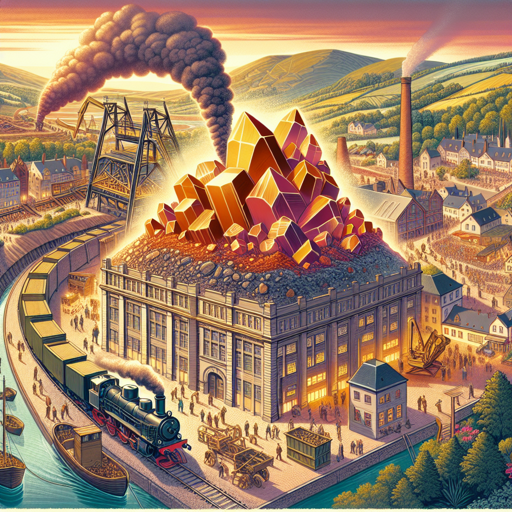Luxembourg's Iron Ore Legacy: A Rich Mining History Unveiled
Dive into Luxembourg's iron ore mining history and its deep economic impact on the nation.

Introduction
Luxembourg, though small in size, is a country with a grand legacy that resonates through the annals of its industrial history. An often overlooked protagonist in this narrative is iron ore, the unassuming mineral that shaped Luxembourg’s economic and social fabric. This article will transport you back in time, tracing the iron ore mining legacy of Luxembourg and its profound economic impact.
The Dawn of Iron Ore Mining in Luxembourg
The tale of iron ore mining in Luxembourg commenced in the pre-Roman era, but it gained prominence in the 19th century during the Industrial Revolution. The southern region of Luxembourg, known as ‘Minett,’ is rich in high-quality iron ore deposits. The advent of the blast furnace technology revolutionized the mining industry, propelling Luxembourg to become one of Europe’s leading iron and steel producers.
The Golden Age of Luxembourg’s Iron Ore Mining
During the early 20th century, Luxembourg’s iron ore mines were bustling with activity. The industry saw a significant boom, especially during the two World Wars, providing the much-needed impetus to Luxembourg’s economy.
However, the post-war period was not as kind to the iron ore industry. With the exhaustion of high-grade ores and stiff competition from foreign markets, the mining industry saw a gradual decline.
“Luxembourg’s iron ore may have been a hidden treasure, but it was a treasure that shaped a nation’s destiny.” - Joseph Kieffer, Historian
Economic Impact of Iron Ore Mining
Iron ore mining played a pivotal role in shaping Luxembourg’s economy. At its peak, the industry employed over 20,000 people and accounted for nearly 80% of the country’s total industrial production.
| Year | Iron Ore Production (in tons) | Percentage of Total Industrial Production |
|---|---|---|
| 1913 | 5,867,000 | 72% |
| 1937 | 3,477,000 | 78% |
| 1960 | 1,878,000 | 50% |
The Legacy Continues
Though the last iron ore mine in Luxembourg closed its doors in 1981, the legacy of this industry remains vibrant. Today, Luxembourg is home to ArcelorMittal, the world’s largest steelmaking company, carrying forward the country’s iron ore legacy.
Conclusion
Luxembourg’s iron ore mining history is a testament to the resilience and innovation of a nation that used its resources to fuel its economy and shape its identity. The echoes of the hammer striking the iron ore continue to resonate, reminding us of the rich legacy that lies beneath the surface.
As we continue to navigate the complexities of the 21st century, Luxembourg’s iron ore legacy serves as a potent reminder of the boundless possibilities that lie beneath our feet. As geologists, historians, or simply curious minds, we must continue to dig deeper, uncovering the stories that our planet has to share.